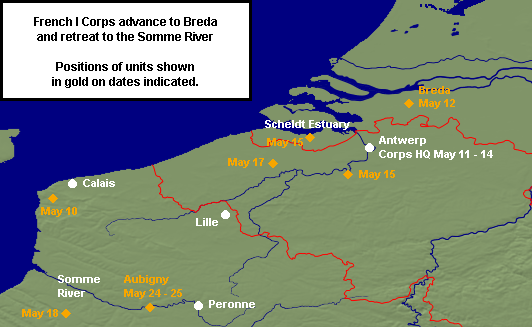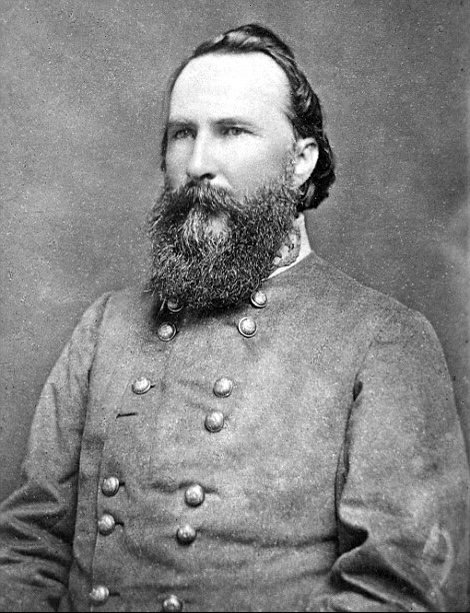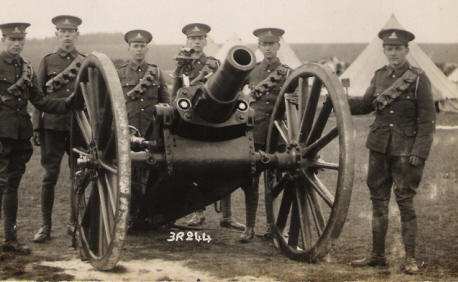|
I Corps (other)
I Corps, 1st Corps, or First Corps may refer to: France * 1st Army Corps (France) * I Cavalry Corps (Grande Armée), a cavalry unit of the Imperial French Army during the Napoleonic Wars * I Corps (Grande Armée), a unit of the Imperial French Army during the Napoleonic Wars Germany * I Cavalry Corps (German Empire), a unit of the Imperial German Army * I Corps (German Empire), a unit of the Imperial German Army * I Reserve Corps (German Empire), a unit of the Imperial German Army * I Royal Bavarian Corps, a unit of the Bavarian Army and the Imperial German Army * I Royal Bavarian Reserve Corps, a unit of the Bavarian Army and the Imperial German Army * I Army Corps (Wehrmacht), a unit in World War II * I SS Panzer Corps, a unit in World War II India * I Corps (British India) * I Corps (India) Russia and Soviet Union * 1st Army Corps (Russian Empire) * 1st Guards Assault Aviation Corps * 1st Guards Mechanized Corps (Soviet Union) * 1st Airborne Corps (Soviet Union) * ... [...More Info...] [...Related Items...] OR: [Wikipedia] [Google] [Baidu] |
1st Army Corps (France)
The 1st Army Corps () was first formed before World War I. During World War II it fought in the Battle for France in 1940, on the Mediterranean islands of Corsica and Elba in 1943–1944 and in the campaigns to liberate France in 1944 and invade Germany in 1945. World War I The Corps saw service throughout the entirety of World War I. During the Battle of St. Quentin (1914), Battles of St. Quentin and Guise, the 1st Corps forced Karl von Bülow's 2nd Army (German Empire), 2nd Army into retreat in what historian Stuart Robson called "the last old-style Napoleonic infantry charge in history." This forced Alexander von Kluck to divert the 1st Army (German Empire), 1st Army as a reinforcement, preventing the Imperial German Army from encircling Paris and overrunning France under the Schlieffen Plan. The Corps participated in the Battle of Passchendaele as part of the 1st Army (France), First Army. At the time, the Corps comprised the 1st Infantry Division (France), 1st Division, ... [...More Info...] [...Related Items...] OR: [Wikipedia] [Google] [Baidu] |
1st Army Corps (Soviet Union)
The 1st Army Corps was an army corps of the Soviet Armed Forces. It was formed in 1957 and finally deactivated in 1991. It draws its history from the 1st Rifle Corps, formed in 1922. Troops of the 1st Rifle Corps participated in the Winter War (November 1939 - March 1940) and World War II. First Formation The corps was formed in June, 1922 in Petrograd (currently Saint-Petersburg) as the 1st Army Corps (1 ak). Creation of the corps was based on a Directive of the Commander number 195060/69, of 15 May 1922, Order Petrograd VO No.1416/383, 6 June 1922. In July 1922 it was named the 1st Rifle Corps. In 1926 corps headquarters was moved to Novgorod, and in 1938 to Pskov. On May 15, 1939, the 75th Rifle Division (75th RD) was transferred from the 14th Rifle Corps ( Kharkov Military District) and arrived in the Leningrad Military District. In September 1939, the 75th Rifle Division concentrated in the 1st Rifle Corps 8th Army on the border with Estonia. In November 1939 the 75th R ... [...More Info...] [...Related Items...] OR: [Wikipedia] [Google] [Baidu] |
First Army Corps (Spanish-American War)
First most commonly refers to: * First, the ordinal form of the number 1 First or 1st may also refer to: Acronyms * Faint Images of the Radio Sky at Twenty-Centimeters, an astronomical survey carried out by the Very Large Array * Far Infrared and Sub-millimetre Telescope, of the Herschel Space Observatory * For Inspiration and Recognition of Science and Technology, an international youth organization * Forum of Incident Response and Security Teams, a global forum Arts and entertainment Albums * ''1st'' (album), by Streets, 1983 * ''1ST'' (SixTones album), 2021 * ''First'' (David Gates album), 1973 * ''First'', by Denise Ho, 2001 * ''First'' (O'Bryan album), 2007 * ''First'' (Raymond Lam album), 2011 Extended plays * ''1st'', by The Rasmus, 1995 * ''First'' (Baroness EP), 2004 * ''First'' (Ferlyn G EP), 2015 Songs * "First" (Lindsay Lohan song), 2005 * "First" (Cold War Kids song), 2014 * "First", by Lauren Daigle from the album '' How Can It Be'', 2015 * "First" ... [...More Info...] [...Related Items...] OR: [Wikipedia] [Google] [Baidu] |
First Corps, Army Of Tennessee
The First Corps, Army of Tennessee, commonly known as Polk's Corps, Cheatham's Corps, or Hardee's Corps, was a corps of the Army of Tennessee. Formation Units of the First Corps, Army of Tennessee, were drawn from the organization of Department No. 2 (or the Western Department) of the Confederate army, which held responsibility for defending the area between the Tennessee and Mississippi. It also incorporated troops transferred from the Army of Mississippi. History Lieutenant-General Leonidas Polk commanded the corps from November 26, 1862, and held it with minor interruptions until his relief on September 29, 1863, and subsequent arrest on October 23, 1863.Eicher, p. 890. It participated in the Tennessee Campaign (June to October 1863) under General Braxton Bragg. Major engagements under General Polk included Stones River (from December 1862 until January 1863) and Chickamauga (in September 1863). Major-General Benjamin F. Cheatham commanded the corps four times; duri ... [...More Info...] [...Related Items...] OR: [Wikipedia] [Google] [Baidu] |
First Corps, Army Of Northern Virginia
The First Corps, Army of Northern Virginia (or Longstreet's Corps) was a military unit fighting for the Confederate States of America in the American Civil War. It was formed in early 1861 and served until the spring of 1865, mostly in the Eastern Theater of the American Civil War, Eastern Theater. The corps was commanded by James Longstreet for most of its existence. In part or as a whole, the corps fought in nearly all of the major battles in the Eastern Theater, such as Battle of Fredericksburg, Fredericksburg, Battle of Gettysburg, Gettysburg, Battle of the Wilderness, The Wilderness, Battle of Cold Harbor, Cold Harbor, and the Siege of Petersburg. The corps also fought in Tennessee and performed important forage service in Suffolk, Virginia. It was disbanded shortly following Full General (CSA), Gen. Robert E. Lee's surrender to Union (American Civil War), Union forces on April 9, 1865. Origins On June 1, 1862, Robert E. Lee took command of the Confederate Army of the Potom ... [...More Info...] [...Related Items...] OR: [Wikipedia] [Google] [Baidu] |
I Corps (Union Army)
I Corps (First Corps) was the designation of three different corps-sized units in the Union Army during the American Civil War. Separate formation called the I Corps served in the Army of the Ohio/ Army of the Cumberland under Alexander M. McCook from September 29, 1862 to November 5, 1862, in the Army of the Mississippi under George W. Morgan from January 4, 1863 to January 12, 1863 (which was the re-designated XIII Corps (ACW)), and in the Army of the Potomac and Army of Virginia (see below). The first two were units of very limited life; the third was one of the most distinguished and veteran corps in the entire Union Army, commanded by very distinguished officers. The term "First Corps" is also used to describe the First Veteran Corps from 1864 to 1866. History The I Corps was created on March 3, 1862, when President Abraham Lincoln ordered the creation of a five-corps army, then under the command of Major General George B. McClellan. The first commander of the cor ... [...More Info...] [...Related Items...] OR: [Wikipedia] [Google] [Baidu] |
I Armored Corps (United States)
The I Armored Corps was a corps-sized formation of the United States Army that was active in World War II. The Corps made landfall in Morocco in French North Africa during Operation Torch in November 1942, the Allied invasion of French North Africa, as the Western Task Force, under the command of Major General George S. Patton, the first all-American force to enter the war against the Germans. Following the successful defeat of the Axis powers under ''Generalfeldmarschall'' Erwin Rommel in North Africa, in May 1943, I Armored Corps was redesignated as the Seventh Army on 10 July 1943 while at sea en route to the Allied invasion of Sicily as the spearhead of Operation Husky. History * Established – 15 July 1940 – at Fort Knox, Kentucky under the command of Major General Adna R. Chaffee Jr. * Change of command – November 1940 – Major General Charles L. Scott assumes command * Change of command – 15 January 1942 – Major General George S. Patton assumes command ... [...More Info...] [...Related Items...] OR: [Wikipedia] [Google] [Baidu] |
I Amphibious Corps
III Marine Expeditionary Force (III MEF) is a formation of the Marine Air-Ground Task Force of the United States Marine Corps. It is forward-deployed and able to rapidly conduct operations across the spectrum from humanitarian assistance and disaster relief (HA/DR) to amphibious assault and high-intensity combat. It maintains a forward presence in Japan and Asia to support the Treaty of Mutual Cooperation and Security between the United States and Japan (1960) and other alliance relationships of the United States. III MEF also conducts combined operations and training throughout the region in support of the National Security Strategy for Theater Security Cooperation. The Marines and sailors of III MEF engage in more than 65 combined, bilateral and multilateral training exercises annually throughout the Asia-Pacific region, in countries including treaty allies Japan, Thailand, South Korea, the Philippines, and Australia. These exercises build partner capacity, develop and maint ... [...More Info...] [...Related Items...] OR: [Wikipedia] [Google] [Baidu] |
I Corps (United States)
The I Corps is a corps of the United States Army headquartered in Joint Base Lewis-McChord, Washington. It is a major formation of United States Army Pacific (USARPAC) and its current mission involves administrative oversight of army units in the Asia-Pacific region, including the Pacific Pathways program. Activated in World War I in France, the I Corps oversaw US Army divisions as they repelled several major German offensives and advanced into Germany. The corps was deactivated following the end of the war. Reactivated for service in World War II, the corps took command of divisions in the south Pacific, leading US and Australian Army forces as they pushed the Japanese Army out of New Guinea. It went on to be one of the principal leading elements in the Battle of Luzon, liberating the Philippines. It then took charge as one of the administrative headquarters in the occupation of Japan. Deployed to Korea at the start of the Korean War, the corps was one of three corps th ... [...More Info...] [...Related Items...] OR: [Wikipedia] [Google] [Baidu] |
1st Suffolk Artillery Volunteer Corps
The 1st Suffolk Artillery Volunteers was a unit of Britain's Volunteer Force and Territorial Army from 1860 until 1955. Raised at Lowestoft in Suffolk, it served under various designations, as field artillery in Palestine during World War I and as heavy anti-aircraft artillery defending the UK during World War II. Origin The enthusiasm for the Volunteer movement following an invasion scare in 1859 saw the creation of many units composed of part-time soldiers eager to supplement the Regular British Army in time of need. The 1st Suffolk Artillery Volunteer Corps (AVC) was formed at Lowestoft on 19 July 1860 and from 31 May 1861 it was attached to the 3rd Administrative Battalion of Suffolk Rifle Volunteers at Bury St Edmunds. In January 1864, together with other AVCs from Suffolk and Essex, the unit was attached to the 1st Norfolk AVC for administration, and in November that year the 1st Administrative Brigade of Norfolk Artillery Volunteers was formed with four batteries from Norf ... [...More Info...] [...Related Items...] OR: [Wikipedia] [Google] [Baidu] |
I Airborne Corps (United Kingdom)
The I Airborne Corps was an airborne forces corps raised by the British Army during the Second World War. Together with the U.S. XVIII Airborne Corps it was part of the First Allied Airborne Army. Formation Under the command of Lieutenant-General Frederick Arthur Montague Browning, ''I Airborne Corps'' was formed in 1943, with the 1st and 6th Airborne Divisions under command.Horn and Wyczynski, p.294 The Corps also contained the Special Air Service's SAS Brigade. In August 1944, the corps became part of the First Allied Airborne Army, alongside U.S. XVIII Airborne Corps. Later in the war, as well as the 1st and 6th Airborne Divisions, the corps had the 1st Special Service Brigade, the Polish 1st Parachute Brigade and the 52nd (Lowland) Infantry Division an air-transportable division under corps command. Other units assigned to the corps were the American 82nd, and 101st Airborne Divisions during Operation Market Garden in September 1944. Lieutenant-General Richard N ... [...More Info...] [...Related Items...] OR: [Wikipedia] [Google] [Baidu] |
I Corps (United Kingdom)
I Corps ("First Corps") was an army corps in existence as an active formation in the British Army for most of the 80 years from its creation in the World War I, First World War until the end of the Cold War, longer than any other corps. It had a short-lived precursor during the Waterloo Campaign. It served as the operational component of the British Army of the Rhine (part of NATO's Northern Army Group (NORTHAG)) during the Cold War, and was tasked with defending West Germany. Napoleonic precursor Assembling an army in Belgium to fight Napoleon's resurgent forces in the spring of 1815, the Arthur Wellesley, 1st Duke of Wellington, Duke of Wellington formed it into army corps, deliberately mixing units from the Anglo-Hanoverian, Dutch-Belgian and German contingents so that the weaker elements would be stiffened by more experienced or reliable troops. As he put it: 'It was necessary to organize these troops in brigades, divisions, and corps d’armee with those better disciplined ... [...More Info...] [...Related Items...] OR: [Wikipedia] [Google] [Baidu] |






